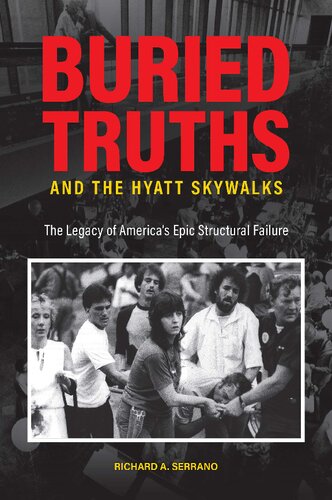

Most ebook files are in PDF format, so you can easily read them using various software such as Foxit Reader or directly on the Google Chrome browser.
Some ebook files are released by publishers in other formats such as .awz, .mobi, .epub, .fb2, etc. You may need to install specific software to read these formats on mobile/PC, such as Calibre.
Please read the tutorial at this link: https://ebookbell.com/faq
We offer FREE conversion to the popular formats you request; however, this may take some time. Therefore, right after payment, please email us, and we will try to provide the service as quickly as possible.
For some exceptional file formats or broken links (if any), please refrain from opening any disputes. Instead, email us first, and we will try to assist within a maximum of 6 hours.
EbookBell Team

4.4
42 reviewsIn 1981 the sudden collapse of two skywalks in Kansas City’s Hyatt hotel killed 114 people and injured another 200. There never was a public trial, nor a full airing of everything that went wrong. Richard A. Serrano shared a Pulitzer Prize for his coverage of the disaster at the time; now he returns to the tragedy to learn all that went wrong, how it could have been avoided, and what lasting effects persist today―for engineering and the legal system, but most importantly those who suffered. Drawing on legal depositions, evidentiary material, and recollections from 240 survivors, first responders, and construction officials,Buried Truths and the Hyatt Skywalksis the story of this monumental catastrophe and what it teaches us today. The Friday evening Tea Dance was all the rage that summer of 1981. Each week the lobby filled with throngs of revelers, some celebrating atop the skywalks themselves. On July 17, without warning, the steel support systems buckled and the concrete and glass skywalks crashed onto the crowded lobby. The devastation reverberated far beyond the ruins. Firefighters, police officers, and paramedics suffered from deep depression, cycled through divorce, hit the bottle, and in some instances committed suicide. The hotel had been built using a new fast-track method with key construction decisions often made on the fly, including changing the skywalk design from six heavy hanger rods to twelve thinner poles. Within a year the skywalks were splintering inside. Even then the collapse could have been averted, but special inspection panels to check the hanging walkways were never opened. Though wholly avoidable, the Hyatt disaster did bring significant changes―some good and some problematic. Tougher industry guidelines were enforced for US construction projects. Police officers, firefighters, and health care workers are now treated for PTSD and other psychological trauma after working a tragic event. But the rush to settle